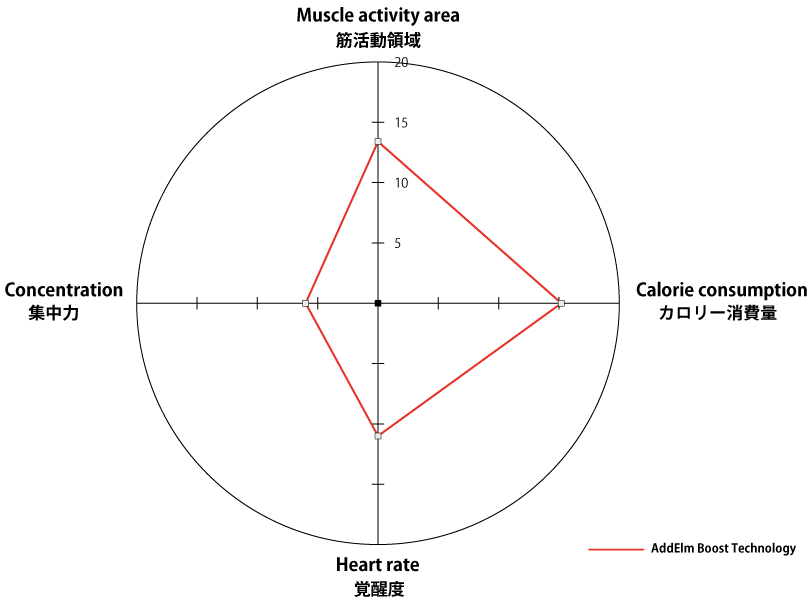

We used AddElm Boost Technology (AddElm) as a reference when building an active index.
This allowed us to obtain clear test results for AddElm.
The test method, measurement details, and results are as follows.
【Test method】
・ Wear A (general material wear) and B (AddElm product). Perform constant movement and measure and compare.
* Use the same dimensions and compression for A and B, and do not tell the subject (under the same conditions) any information about it.
[Measurement content]
(1) Muscle activity
② Calorie consumption
(3) Changes in heart rate
④ Change in concentration
to measure the effect of AddElm on the human body.
[Results (observations)]
(muscle activity)
Muscle activity tends to increase when wearing AddElm.
(calorie consumption)
As a result of measuring expiratory metabolism during exercise, calorie consumption tends to increase.
(Arousal level)
When comparing resting heart rates, the heart rate tends to increase when wearing AddElm.
An increase in heart rate is assumed to increase blood flow, and it is thought that a warming-up effect has occurred.
(concentration)
Concentration persists compared to when not wearing it, and there is a tendency for the decline in concentration to slow down.
*From the inspection agency “HC Lab”
*Total number of subjects for one year: 34.
*The graph below shows the difference when the normal time is set to “0” (average value).

(average data)
[Myoelectric potential measurement]
Normal time: 6376
When wearing performance wear: 6834
Total change rate: 3966.9%
Average: 133.7%
[Respiratory metabolism * calorie consumption]
Normal time: 3850
When wearing performance wear: 3865
Total increase/decrease rate: 51.1%
Average: 3.04%
[Arousal level * heart rate]
(at rest)
Normal time: 68
Wearing performance wear: 69
Sum of increase/decrease rate: 52%
Average: 102.2%
[Measurement of concentration endurance]
(Normal time)
Delay multiple: 1.42
Sum of change rate: 109.81%
Average: 1.61%
(When wearing performance wear)
Delay multiple: 1.20
Total change rate: 87.07%
Average: 1.28%
